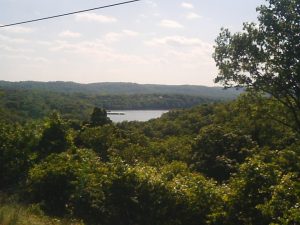View Monthly Specials!

The City of Springdale, Arkansas, is one of the largest cities in the state, thanks to its almost 80,000 residents. Found at the foothills of the Ozark Mountains, the city consists of 42 square miles and contains several notable historic sites within its city limits. Keep reading to learn more about these locations and why they’re so important to the area.
Arts Center of the Ozarks
Open Tuesday through Saturday from 10 a.m. until 2 p.m., the Arts Center of the Ozarks (ACO) began as the Springdale Fine Arts Association in 1967. Located in downtown Springdale, the ACO has been providing and making art for the past five decades. Today, the nonprofit is known for its production and visual arts classes, theater productions, and its art on the gallery walls.
Fitzgerald Station and Farmstead
Added to the National Register of Historic Places in 2003, the Fitzgerald Station and Farmstead in Springdale includes a barn, house, stable, chicken house, outdoor fire pit, and pump house. The barn was used by Butterfield’s Overland Mail Company for three years in the 1800s. The site also earned designation by the National Park Service as a certified site found on the Trail of Tears National Historic Trail.
The history behind the site is that John Fitzgerald, Sr. and his wife, Mary, moved their family from Alabama to the site in present-day Springdale in the late 1820s. The family owned slaves, and after Mr. Fitzgerald died in 1875, he mentioned a former slave, Louisa, in his will. She had remained with the family after her emancipation.
In addition, the site was witness to two Cherokee detachments who were removed from their homelands to present-day Oklahoma. The B.B. Cannon detachment arrived at their homestead in 1837, and the Richard Taylor detachment passed by in 1839. The latter was part of the exodus known as the Trail of Tears.
Shiloh Museum of Ozark History
The museum’s history began in 1965 when the City of Springdale purchased a huge collection of Native American artifacts that resident Guy Howard had amassed over more than 60 years. The collection featured 10,000 prehistoric and historic artifacts as well as 260 books that highlighted archeology and anthropology. Afterward, officials moved the items to an empty building and then the old Springdale Public Library was selected as the museum’s first home. In 1991, the museum relocated to its current location, which is a 22,000-square-foot building.
When visiting the Shiloh Museum of Ozark History, you can learn more about the regional history of the Northwest Arkansas Ozarks. You can learn about men, women, and children who lived in nearby towns and rural areas. There are core, temporary, and online exhibits available, and admission is free.
Originally started as a small settlement in 1840 and named “Shiloh” after the local Shiloh church, Springdale became incorporated in 1878 and had its name changed. Since its establishment more than 200 years ago, the area has experienced quite a bit of history. These three locations house important documents, photos, and information regarding how Springdale, Arkansas, came to be.
Image via Flickr by Victoria – Ozarks Crescent Mural




